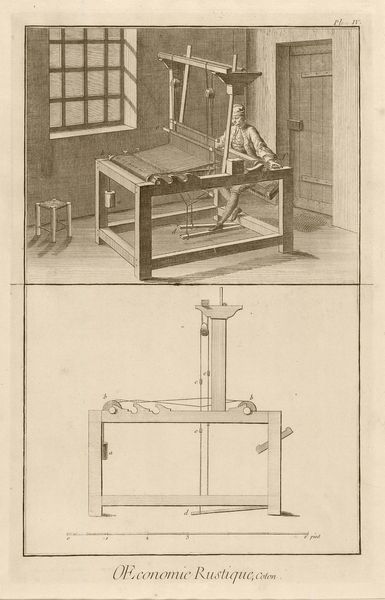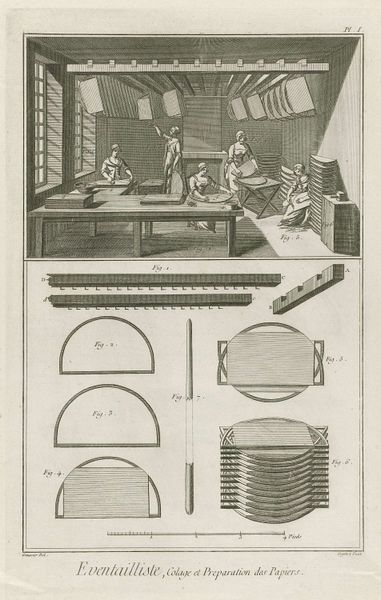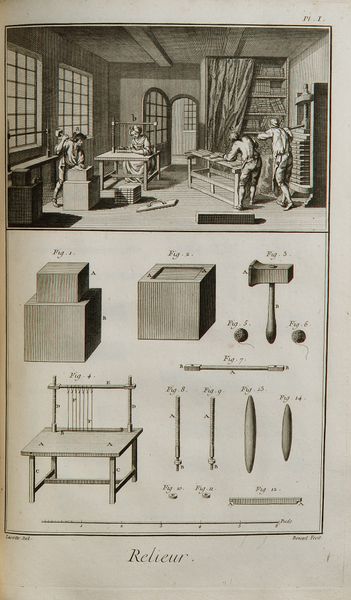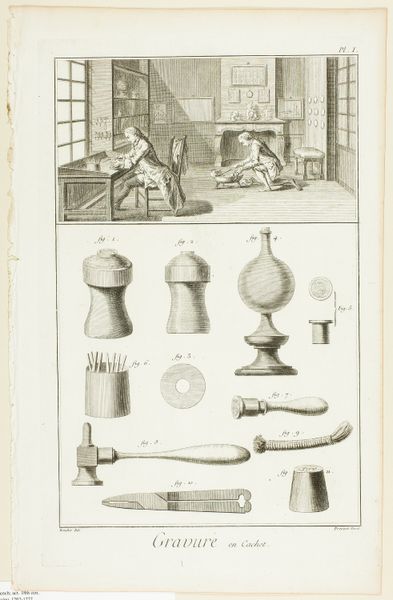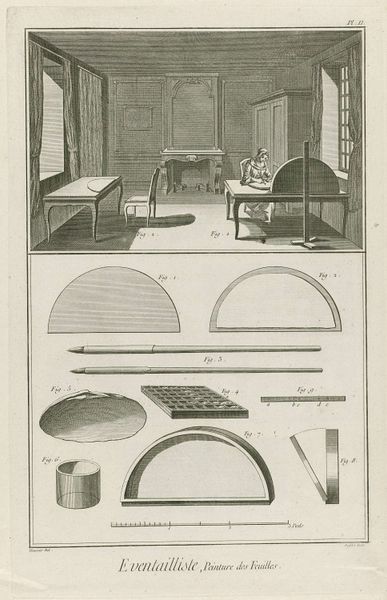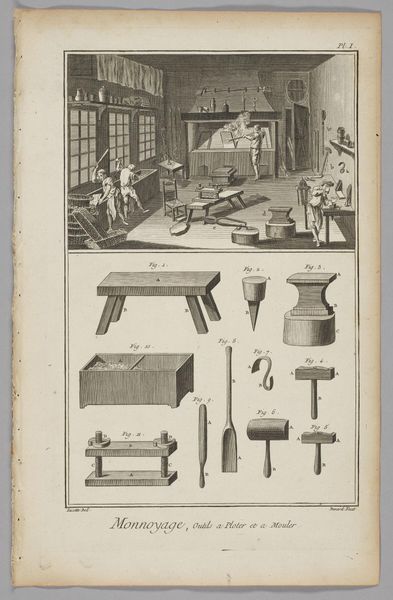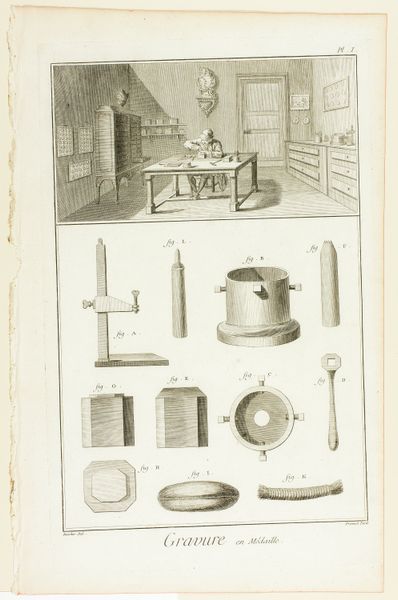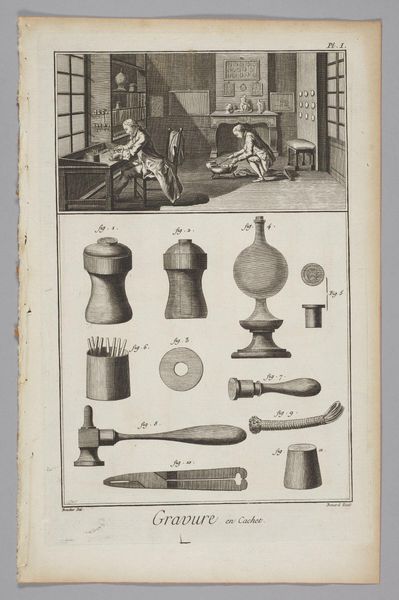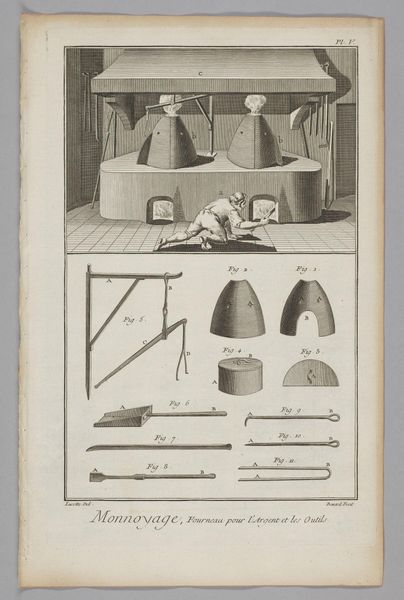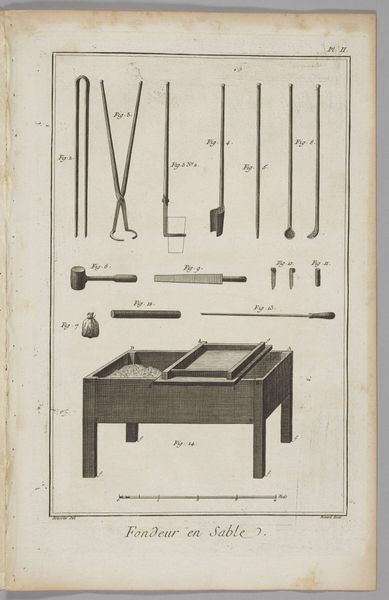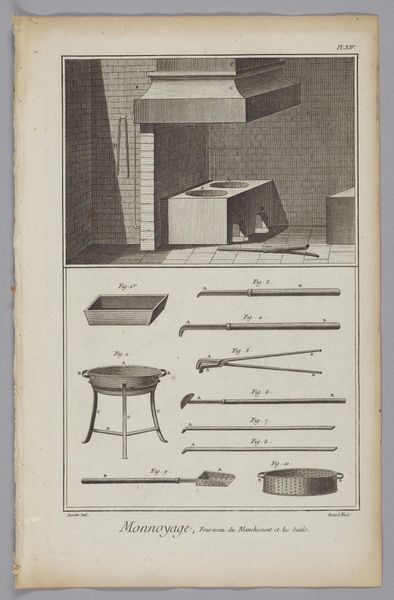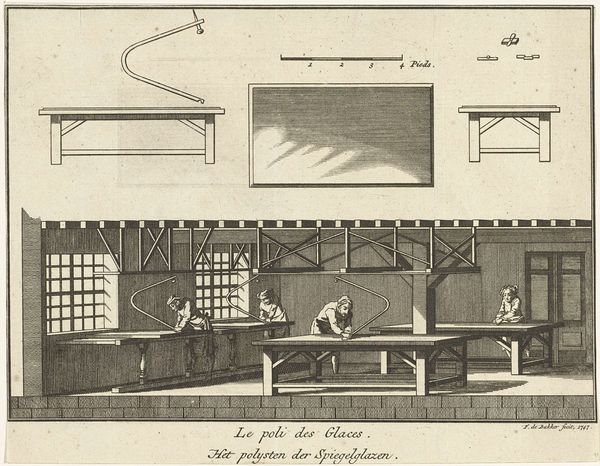
Dimensions: 13 7/8 x 8 15/16 in. (35.24 x 22.7 cm) (plate)16 x 10 1/8 in. (40.64 x 25.72 cm) (sheet)
Copyright: Public Domain
Curator: This etching, “Pedal-Mill (Plate I)”, dating back to 1762, presents a fascinating glimpse into 18th-century industrial processes. Editor: My initial reaction is one of quiet efficiency, a kind of diagrammatic poetry. The subdued tones and the orderly arrangement of figures and machinery feel precise. Curator: The print belongs to a series of plates related to textile production published in Diderot’s “Encyclopédie”, wasn’t it? The level of detail is staggering! The lower half details specific components and mechanisms, each carefully labeled. It offers insight into the inner workings of these industrial devices. Editor: It does feel less like art and more like an attempt to distill knowledge into an image. I wonder about the men pictured. Each is a cog, each repeating the same motion, each subsumed within the greater mechanisms. It gives me a melancholic feeling, this early premonition of industrial society. Curator: Precisely. This image, while seemingly objective, holds potent cultural meaning. It shows the evolution of production during the Enlightenment and reminds us of its effects on labour. I find it curious how machines replaced skills, introducing efficiency but creating new forms of alienation. Editor: Yes, like we are looking back at the dawn of a new era—one that brought both promise and deep questions of humanity. The plate serves as a reminder of our own complicity in shaping technological narratives. We celebrate and simultaneously mourn the changes that our tools instigate. It is an incredibly powerful and moving engraving. Curator: Seeing it from this angle changes things for me too! Suddenly this becomes a complex reflection about progress and about people… So much to consider! Editor: Exactly, a humble-seeming plate turns into an entry point into something so very important!
Comments
No comments
Be the first to comment and join the conversation on the ultimate creative platform.
